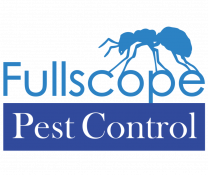Pest Control Summerwood, TX
You value your family and home and would prefer not to share them with unwanted guests (pests). That is why Fullscope Pest Control offers specialized minimal impact and caring pest control solutions to assist you in protecting both of them. Fullscope understands your worries about your family and believes that a company must offer a good quality of services for their client. So, here is the Fullscope pest control Summerwood TX, giving excellent service and ensuring that you and your family are far from the dangerous pests.
The Essence Of Having Pest Control
Pests are organisms that are deemed detrimental to people or their interests. Plants or animals that spread sickness, cause disease, or damage crops or infrastructure are examples. A pest’s definition is subjective. A leaf-eating caterpillar on a corn plant might not be considered an issue by an ecologist, but a farm worker could. Pests include insects, viruses, and bacteria that spread disease. It could also refer to animals that wreak havoc on crops or man-made structures. Plants, such as wildflowers or fungi, and animals, such as rodents, mice, and birds, cause harm to crops or stored food.
Pest control involves the elimination or reducing pest breeding, growth, or migration. Pest control has a massive economic influence on the world. Even with current pest-control measures, crop pests damage millions of hectares of crops worldwide each year. Rodents have been observed to ruin up to 50% of a rice crop before harvesting in Southeast Asia. Pest and mouse contamination of stored goods and crops costs the United States more than $500 million each year. Read more about Tavola MAster Subdivision Residential Pest Control
Since they consume wood, certain insects are called pests. They pose a hazard to wooden constructions such as homes and other structures, trees, and fences. Several ant, bee, and insect species may also cause damage to timber buildings.
Pest control is used in farming to safeguard agricultural produce and forests exploited for timber. Pest management has also helped prevent various potentially fatal diseases, including yellow fever, plague, malaria, encephalitis, and typhus.
Let’s take a look at some pest control methods and techniques.
Chemical Control
Pesticides, which are chemicals that might kill or restrict the growth of pests, are the most often used form of pest management. Pesticides are often classified based on the pest they are meant to control. For example, insecticides are used to kill insects; herbicides are used to manage plants; rodenticides are used to manage rodents; fungicides are used to reduce fungi; avicides are used to control birds, and bactericides are used to control bacteria. Chemosterilants and growth regulators are pesticides that prevent pests from reproducing or growing normally.
Poisonous plant chemicals were most likely the first chemical pesticides. Farmers grind up plants that were harmful to insects or rodents in the 18th and 19th centuries, such as chrysanthemums or tobacco. The plant “soup” was then immediately applied to either the crops or the pests. Later, chemists discovered that they could separate the deadly chemicals from these poisonous plants and use them as liquid sprays. Finally, nicotine, coal tar, petroleum, turpentine, creosote, and pyrethrum (obtained from a chrysanthemum) were removed for use as sprays. Organic substances like these were later supplanted by more potent inorganic poisons like arsenic, lime, sulfur, strychnine, and cyanide.
During the war, the insecticidal properties of synthetic chemicals DDT (dichlorodiphenyltrichloroethane), which was widely used against disease-spreading insects, and BHC (benzene hexachloride) made pest-free agriculture a possibility. The invention of another synthetic organic molecule, the selective herbicide 2,4-D (2,4-dichlorophenoxyacetic acid), contributed to the growth of other selective herbicides.
Following the discovery of DDT, 2,4-D, and BHC, scientists developed a wide range of synthetic organic insecticides, including growth regulators, chemosterilants, pyrethroids (compounds having insecticidal properties similar to pyrethrum), and organophosphate chemicals. After the hazardous durability of pesticide residues was discovered, this study was broadened to create an alternate, non-chemical pest management approach. DDT and its related chemicals are not readily degraded in the environment, as found in the 1950s. DDT’s great stability causes it to accumulate in insects, which are consumed by other animals. These high quantities of DDT are hazardous to animals, particularly some birds and fish. Scientists also discovered that many bug species quickly generate generations that are resistant to the herbicide.
Biological Control
Pests are biologically controlled by presenting them to hunters or parasites. Predators and parasites are frequently complemented with a program that investigates pest-damaged areas and estimates pest populations. Millions of predators and parasites are then released to ensure pest control.
The ancient Chinese employed natural pest management by using predatory ants to suppress plant-eating pests. Predators were suggested for bed bug control in 1776. The contemporary period of biological pest control started in 1888 when the cottony-cushion scale bug was controlled by importing the vedalia beetle from Australia to California. The citrus-fruit industry was saved by this biological control project.
Pests such as the bean beetle, vegetable hornworms, and aphids have also been managed by insect predators. The employment of bacteria against grubs, or insect larvae, is another organic technique. For example, the bacteria Bacillus thuringiensis is used to inhibit gypsy moth caterpillar larvae as well as mosquito larvae. Mosquito-eating fish and nematodes that feed on soil insects like maize rootworms were introduced as biological control agents in the 1980s.
Other Controls
Cultural management techniques are employed to alter the pest’s environment, limiting access to breeding places, food, and shelter. The yellow-fever mosquito, which thrives in wetlands and tiny pools of water, has been controlled through cultural means. The number of possible breeding grounds for the insect is minimized by draining swamps and removing stagnant pools and other containers where water gathers. Cultural management has also been used to combat structural pests, which rely on protected areas for survival, such as cracks in sidewalks, roads, or buildings; waste; and weeds. Structural pests are frequently efficiently prevented when entrances to possible hiding places are covered, and garbage and waste are removed.
Crops are sometimes guarded against hazardous pests by using a variety of planting strategies. Crop rotation, for example, helps to inhibit the growth of fungus and bacteria populations. In open-area farming, the wind is required to retain flies and other insects away from food crops.
Some pets respond well to physical or mechanical management measures. Sticky walls, heat death (for storage pests), and floods are examples of such controls (for ground pests). Many wood-damaging fungi and insects are not attracted to pressure-treated wood. Traps are another mechanical pest control tool. Some traps are intended to kill or catch rats and other animal pests. Netting and metal shields are used to prevent birds from destroying fruit harvests or roosting on structures. Insects are drawn to and electrocuted by electrical light traps. Fans are positioned above doorways in certain buildings to keep flying insects out.
Summerwood is a lovely neighborhood in northeast Houston, Texas. Summerwood provides unrivaled grandeur with a convenient location just off Beltway 8. Summerwood inhabitants get the country club treatment, whether in their homes or at the several clubhouses, guaranteeing a comfortable and convenient lifestyle.
Population: 48, 783
Weather: 22°C| Wind: 21 km/h| Humidity: 52%
Zip Code: 77044
CALL OUR FULLSCOPE CUSTOMER CARE TODAY AND WE ARE HAPPY TO HELP
Your Local Pest
Control Experts
Are you ready to kick pests to the curb?
Termites are silent destroyers, sometimes eating away at the wood in your home without you knowing. With over 4 years of experience, we’re confident we will get rid of termites in your home. Our professional termite exterminators in Humble completely eliminate termites and keep them out for good!
FullScope Pest Control Cleveland Office
24535 Morgan Cemetery
Rd, Cleveland, TX 77328,
United States
HOURS
MON-FRI: 8AM – 5PM
SATURDAY 9AM – 1PM
Sunday-Closed


